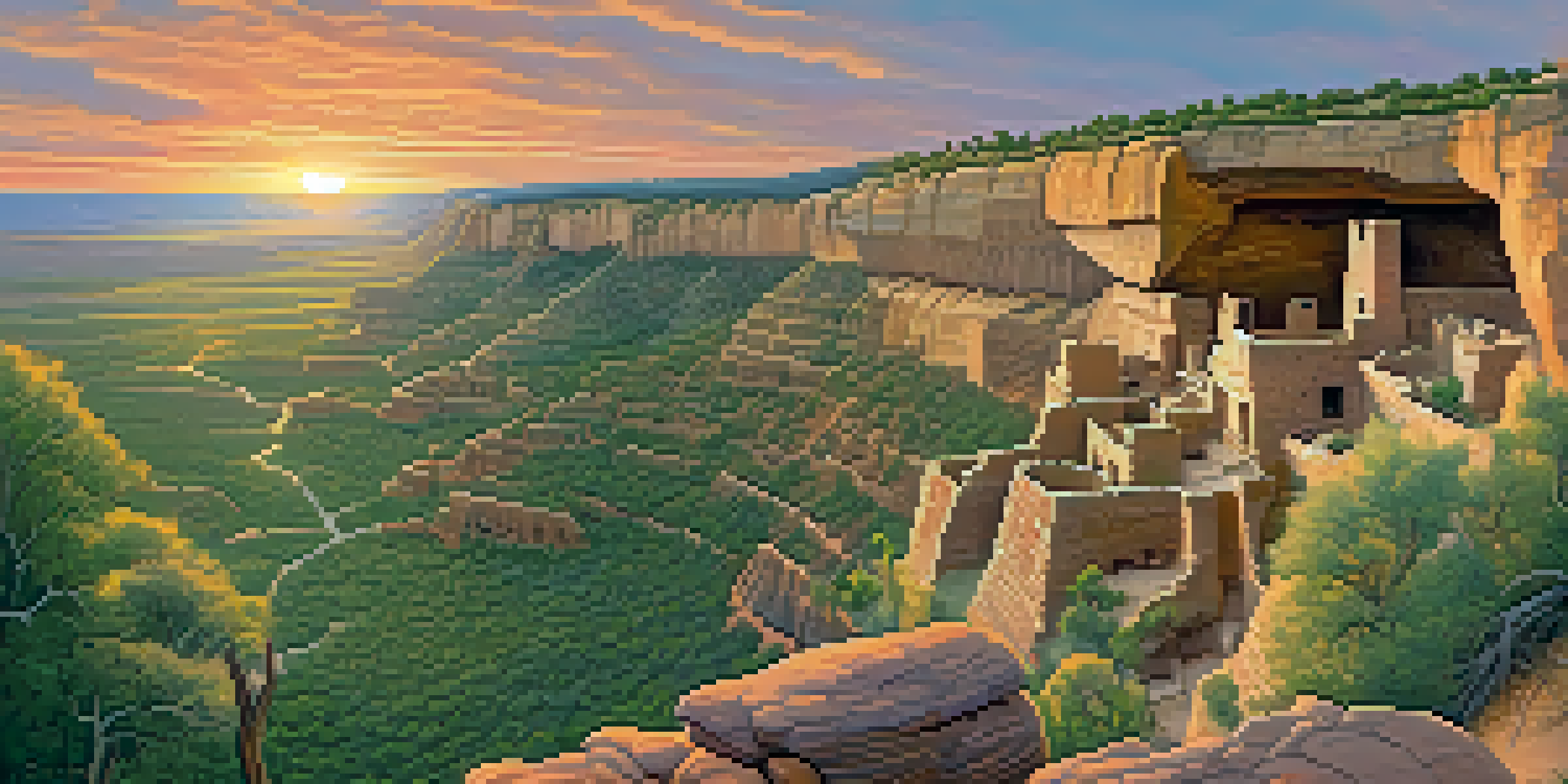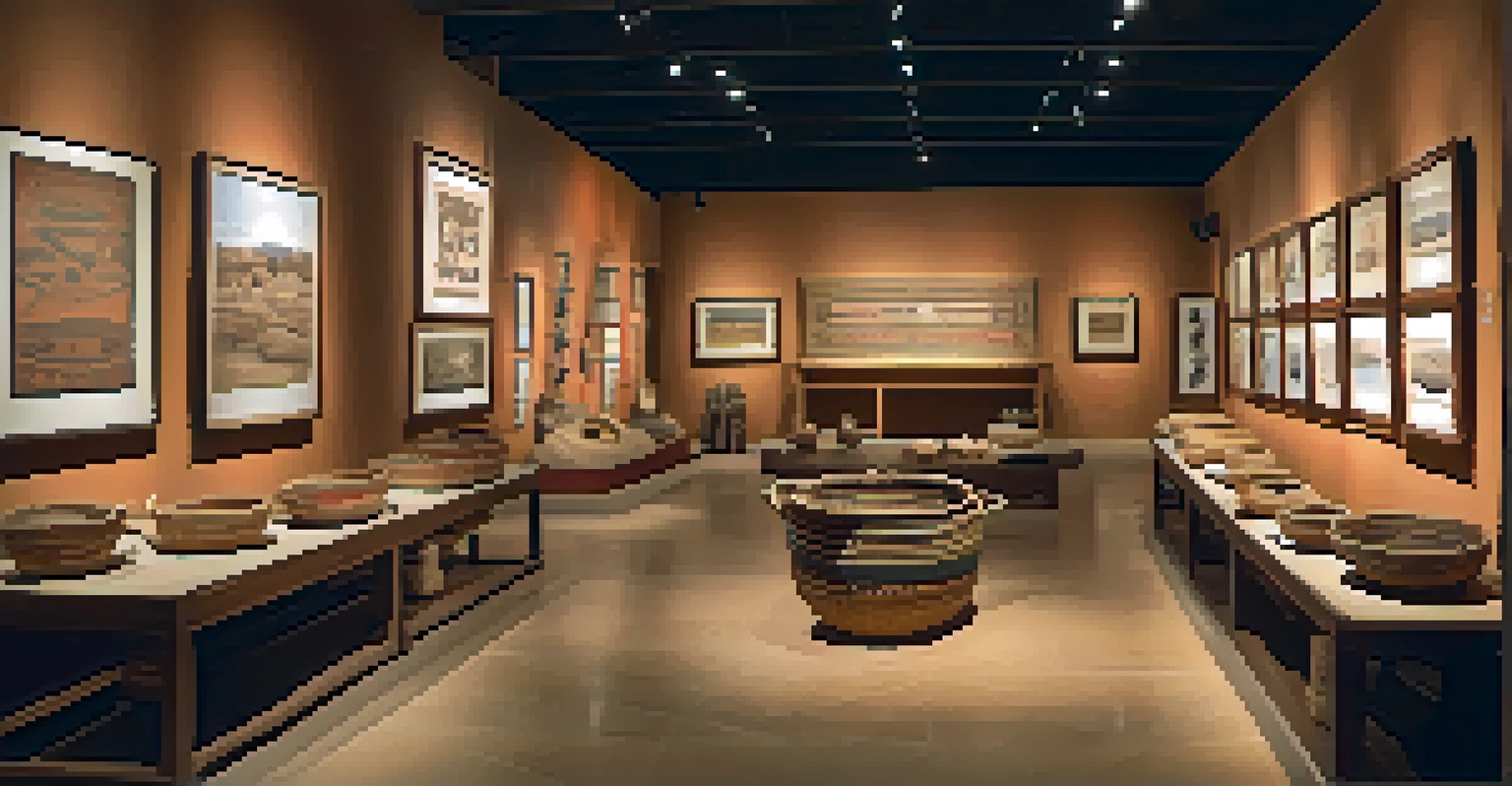Preserving the Past: Colorado's Cultural Heritage Sites

Introduction to Colorado's Cultural Heritage
Colorado is not just known for its stunning landscapes; it boasts a rich tapestry of cultural heritage. From ancient Native American sites to historic mining towns, the state is a treasure trove of history waiting to be explored. Understanding this heritage helps connect us with the past and appreciate the diverse cultures that have shaped Colorado.
Preservation of our cultural heritage is essential to our identity and provides a framework for understanding who we are as a society.
Preserving these cultural sites is crucial, as they offer insights into the lives and traditions of those who came before us. They serve as tangible links to our history, reminding us of the struggles, triumphs, and everyday lives of previous generations. By valuing and maintaining these sites, we ensure that future generations can also learn from them.
Moreover, cultural heritage sites often foster a sense of community and belonging. They attract visitors and locals alike, creating opportunities for education, tourism, and cultural exchange. This interconnectedness enhances our appreciation for Colorado's unique identity and encourages stewardship of these important landmarks.
Key Native American Heritage Sites
Colorado's landscape is dotted with significant Native American sites that tell the story of its first inhabitants. Places like Mesa Verde National Park showcase the remarkable cliff dwellings of the Ancestral Puebloans, offering a glimpse into their advanced architecture and way of life. Visiting these sites not only enriches our understanding of history but also honors the enduring legacy of Native cultures.

Another notable site is the Ute Indian Museum, which highlights the rich history of the Ute people, Colorado's longest-residing tribe. The museum features artifacts, exhibits, and cultural programs that celebrate Ute traditions and contributions to Colorado's heritage. It serves as a vital resource for both education and cultural preservation.
Rich Cultural Heritage in Colorado
Colorado's diverse cultural heritage, from Native American sites to historic mining towns, connects us with the past and enhances community identity.
Engaging with these sites allows visitors to connect with Native American history on a personal level. Guided tours, storytelling sessions, and cultural events provide immersive experiences that deepen our respect for these communities and their ongoing cultural practices.
Historic Mining Towns and Their Stories
The Gold Rush of the 1850s transformed Colorado into a hub of mining activity, leading to the establishment of charming historic towns like Leadville and Cripple Creek. These towns are not only picturesque but also rich in stories of fortune seekers and hard labor. Exploring their preserved buildings and museums provides a fascinating insight into the challenges and triumphs of early miners.
The past is never dead. It's not even past.
Leadville, known for its historic architecture and vibrant mining past, offers visitors a chance to step back in time. The National Mining Hall of Fame and Museum is a must-visit, showcasing the history and technology of mining while honoring those who worked in the industry. It’s a great way to appreciate the grit and determination of the people who shaped Colorado’s economy.
Meanwhile, Cripple Creek, once a bustling gold mining town, now thrives as a heritage tourism destination. Visitors can enjoy the scenic train rides, historic saloons, and the famous Cripple Creek & Victor Gold Mining Company. These experiences help preserve the stories of those who sought their fortunes and contribute to the ongoing narrative of Colorado's mining heritage.
Preservation Efforts in Colorado
Preserving Colorado's cultural heritage requires concerted efforts from local communities, organizations, and government agencies. Various initiatives aim to protect historic sites, ensuring they remain intact for future generations. These efforts often involve restoration projects, educational programs, and community engagement to raise awareness about the importance of cultural preservation.
Organizations like History Colorado play a pivotal role in these efforts by providing resources and support for preservation projects. They work with local governments and communities to identify at-risk sites and develop strategies for their protection. This collaborative approach ensures that preservation is not just a top-down initiative but involves those who are most connected to the heritage.
Importance of Preservation Efforts
Preserving Colorado's cultural heritage requires collaboration among communities, organizations, and government to protect historic sites for future generations.
Additionally, many communities host events and festivals celebrating their unique histories, which fosters pride and encourages preservation. These gatherings create opportunities for storytelling, traditional crafts, and cultural demonstrations, breathing life into the history and inviting new generations to cherish their heritage.
The Role of Museums in Cultural Preservation
Museums are vital in preserving and interpreting cultural heritage, offering a space for education and reflection. In Colorado, institutions like the Denver Museum of Nature & Science and the Colorado Railroad Museum showcase diverse aspects of the state’s history. These museums not only house artifacts but also engage the public through exhibits, workshops, and interactive experiences.
By preserving artifacts and stories, museums help to keep history alive. They provide context and understanding, allowing visitors to explore the complexities of Colorado's past. For instance, the Colorado History Center offers compelling exhibitions on the state’s development, showcasing everything from Indigenous cultures to the impact of westward expansion.
Moreover, museums often collaborate with local communities to highlight underrepresented narratives. This inclusivity enriches our understanding of Colorado’s diverse heritage and ensures that all voices are heard in the preservation conversation. By visiting these museums, we contribute to the ongoing dialogue about our past and its relevance in today’s world.
The Impact of Cultural Tourism
Cultural tourism plays a significant role in preserving Colorado’s heritage by generating interest and funding for historic sites. Visitors drawn to the state’s rich history contribute to local economies, creating a positive feedback loop that supports preservation efforts. As more people explore these cultural sites, they become advocates for their protection and appreciation.
Additionally, cultural tourism encourages communities to invest in their historical resources. Towns with rich cultural narratives often see revitalization projects aimed at attracting tourists, which can lead to improved infrastructure and enhanced visitor experiences. This economic boost can be crucial for small communities that rely on heritage tourism to thrive.
Cultural Tourism Boosts Preservation
Cultural tourism not only generates economic support for historic sites but also fosters local pride and encourages the preservation of traditions.
Furthermore, cultural tourism fosters a sense of pride among locals. When communities celebrate their unique histories and share them with visitors, it strengthens their identity and encourages the preservation of local traditions. This shared experience can create lasting connections, making cultural heritage a vital part of Colorado’s allure.
Looking Ahead: The Future of Heritage Preservation
As we look to the future, the preservation of Colorado's cultural heritage faces both challenges and opportunities. Rapid development and urbanization can threaten historic sites, making it essential to strike a balance between progress and preservation. Community involvement and advocacy will be crucial in ensuring that these irreplaceable cultural landmarks are protected.
Technological advancements also present new avenues for preservation. Digital archiving, virtual reality experiences, and online education programs can enhance accessibility to cultural heritage, allowing a broader audience to engage with Colorado's history. These tools can help preserve stories that might otherwise be forgotten, ensuring they remain part of our collective memory.

Ultimately, the future of heritage preservation in Colorado relies on a shared commitment to valuing our past. By prioritizing education, community involvement, and innovative solutions, we can safeguard the cultural heritage that defines our identity and enriches our lives.